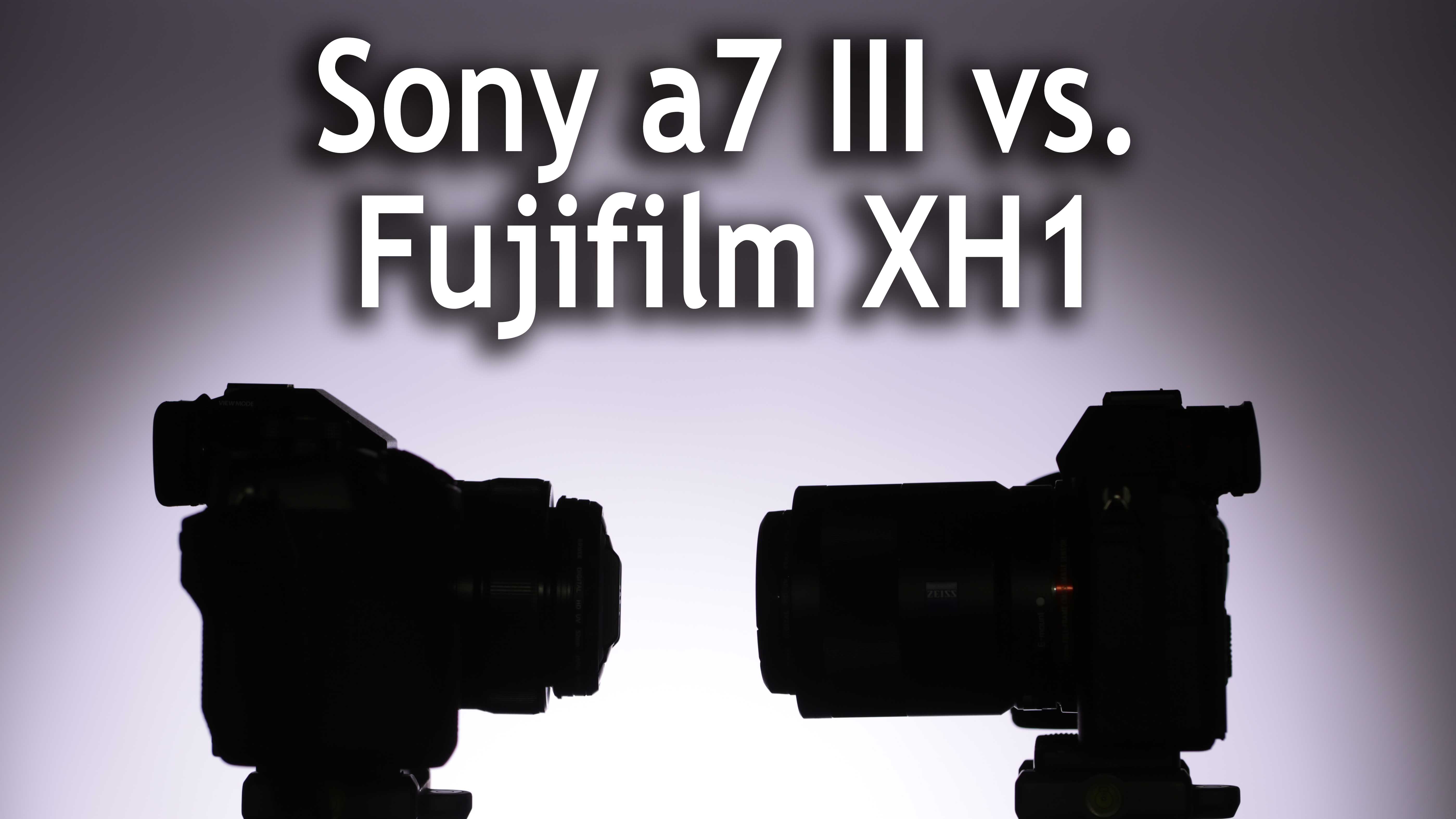In this new video with The Slanted Lens, we’re comparing two cameras that are both mirrorless and fall under the $2000 price range- these cameras being the Sony a7III and the Fujifilm XH1. Both of these selections are notorious for being great mirrorless cameras, however in this video we will dissect image quality, range, and how exactly these cameras compare to one another. The model used in this video was Esmeralda Columna (@esmeraldacolumna) so be sure to show her some social media love!
Photo
The first test shot when running this comparison was a balcony shot to get a better feel for both the Sony a7III and Fujifilm XH1’s image quality. As suspected, depending on which lenses are used, this will have a large impact on image resolution. For the Sony a7 III, the lens used is the 55mm 1.8, and for the Fujifilm XH1, a 35mm 1.4 lens was used. While the Fujifilm is crop sensor, the Sony is full frame. This in itself can bring very different results.
In the first shot with Esmeralda atop a balcony near a pub sign, it was found that the a7 III had much more definition. Within the pub sign, one can see the weathered paint and the chipping more vividly, whereas the XH1 did not pick up as much on these details. The next test was a headshot of our model, Esmeralda, in which when zooming into her face it is very tough to distinguish which camera shot a more defined photo. However, it can be concluded that in this test the Fujifilm’s shot is the more nicer looking of the two. There aren’t as many shadows as the Sony shot, and the highlighting around the eye has a more gradual transition to the shadowing. With thus being said though, comparing the two in this test is seemingly uncanny as Jay P. states with how similar the two are.
The next test was auto-focus capability. The Sony a7III has 693 focus points, which alone summarizes the fact that this camera is easily able to be titled the strongest suitor when it comes to auto-focus. The Fujifilm XH1 only has 325 auto-focus points shooting in single frame mode. If shooting continuous- it’s only 91 auto-focus points. Furthermore, when testing in this field, we had Esmeralda walk towards the camera while shooting in continuous frames. Then after, we did still shots of Esmeralda leaning against a nearby wall. What was found was that the Sony had shot a whopping larger amount of frames than the Fuji was able to capture, and had a lot more buffer. When by the wall, the Fujifilm this time was hitting a lot of the shots and was pretty clear except for some blurred corners in some frames. However, of course, the a7 III never missed the mark. Each shot was so strikingly clear.
The Sony a7 III Portrait:
In the next round, we did a dynamic range experiment where exposing and overexposing images was altered with. In this stage of testing, it can be found that the Fuji had much more vivid of colors. When in negative exposure settings, the photos do get grainy but due to the fact that truthfully both cameras are great- there isn’t a large difference in negative exposure with which camera performed better. Going into overexposure illustrated something much different though. Once reaching +3EV, there lies a vastly large difference and the Sony is seemingly the much more preferred in these circumstances.
Video
In terms of video, Fuji offers both 4k and ‘F-log’, in which F-log keeps a flat profile for shooting video. When testing a still video, the two cameras produced very similar products- the Fujifilm was maybe just a bit richer in color. Sony offered more contrasting within the shot and was darker. The exposure was set at the same level for both. When shooting video in F-log and S-log3 which Sony offers, both looked nice, but the XH1 colors came through as a bit richer. When holding the Fuji XH1 and moving, there was a great amount of stabilization, however once getting closer to Esmeralda, it lost focus. The a7 III, on the other hand, was much better for this.
When doing the slow-motion video test, there was a very clear winner, and it was the Fujifilm XH1. This is easily identifiable in the photo below. With the Sony, there was just too much macro-blocking surrounding Esmeralda’s hair, whereas the Fuji was gorgeously smooth and so vivid.
In Conclusion…
The Fujifilm is physically larger and has the old fashioned dials. It does have a low-performing battery (after shooting for four hours the battery was basically about to die). On the other hand, the Sony has the newer battery that can withstand for a much longer time. The XH1 has the typical rich and unique coloring, however, it was found in terms of size, it’s hard to use, and when tweaking with exposure the EVF looked much better in using the Sony. The Sony is much more versatile in shooting, and can fit the needs of almost any photographer’s specific preferences. There are also more options with gear such as lenses for the Sony, whereas with Fujifilm this is seldom the case. With this being said, and after these tests, it definitely can be concluded that the Sony a7 III has overall won its match against the Fujifilm XH1- for just maybe a couple hundred dollars more, the value can be proven greater for the investment.
Gear Used:
Sony a7III: https://bhpho.to/2MuZdaH
Fujifilm XH1: https://bhpho.to/2MtRGJ1

